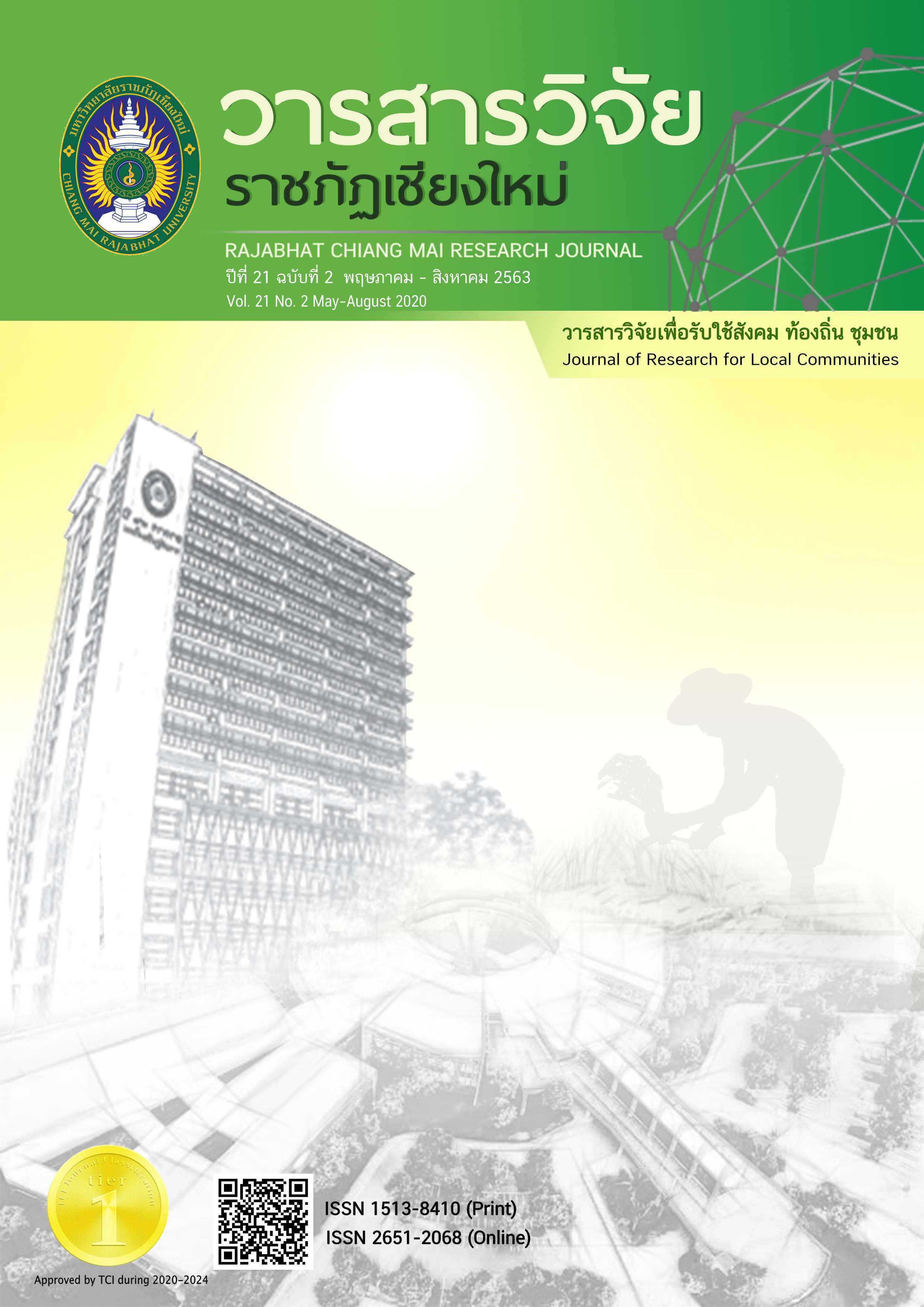The Roles of Sub District Administration Organization in Sustainable Waste Management in The Local Communities with The Case Study Of Khu Mueang Sub District Administration Organization, Nong Bua Daeng District, Chaiyaphum Province
DOI:
https://doi.org/10.14456/rcmrj.2020.238054Keywords:
Roles of sub district administration organization, Waste management in communities, Sustainable successAbstract
The research aims to study the roles of Khu Mueang Sub District Administration Organization in sustainable waste management in the local communities. The study is a qualitative research. It was conducted by the method of focus group, participant observation and content analysis of financial documents.
The study found that there were 5 things Khu Mueang Sub District Administration Organization did to manage waste in the local communities, which included 1) Human Resource Management (Man) Khu Mueang Sub District Administration Organization initiated the waste management program for the communities. 2) Financial Management (Money) sufficient budget allocation was conducted. Waste Bank was also founded to promote waste sorting, which helped generate additional household income. 3) Project Management (Management) meetings and trainings were organized regularly. Also, the inclusion from the local people was promoted. 4) Supply Management (Material) the equipment used in the program was well-supplied. For example, different types of bins for waste sorting, waste processing machines that turns waste into compost fertilizer and waste incinerators and 5) Good Governance (Morality) a transparent income and expenditure account for the program was created and publicized. Also, the progress report was conducted monthly in the regular meeting. Research suggestion in the use of waste management model of Khu Mueang sub district administration organization to be used must be revised or applied to suitable for context of the area. Since area is different, both the environment, attitude and belief of the people in each area.
References
Buranasingh, N. (2017). The Civil State Policy: Guidelines for Waste Management in Thailand. Bangkok: The Secretariat of the House of Representatives. (In Thai)
Hongthong, R., & Udomsub, T. (2016). Visionary Leadership in Leading Change Context. Journal of Humanities, Faculty of Humanities and Social Sciences Phetchaburi Rajabhat University, 18(2), 73-87. (In Thai)
Khu Mueang Subdistrict Administration Organization. (2019). Supporting Documents for Waste Management Information Presentation.Chaiyaphum: Division of Education, Khu Mueang Subdistrict Administration Organization. (In Thai)
Longnam, C. (2019). Guidelines for Waste Management. Chiayaphum Province. Interview. (In Thai)
Sammapetch, S. (2016). Fundamentals of Administration in the Bureaucracy. Bangkok: Krirk University. (In Thai)
Satidworahirun, K. (2014). Solid Waste Management System for Thapho Sub-District Administrative Organization, Muang, Phitsanulok. Sequel Report Academic Conference and Present National and International Research at Kamphaeng Phet Rajabhat University. P.225-231. Kam Phaeng Phet: Kamphaeng Phet Rajabhat University. (In Thai)
Srivichai, M., Chaidaen, P. Teerapong, W., & Jaturon, K. (2014). Waste Management in the Muang-Pan Community Pan District, Chiang Rai Province. Journal of Community Development and Life Quality, 2(3), 245-254. (In Thai)
The Ministry of Natural Resources and Environment. (2017). National Solid Waste Management Master Plan (2016-2021). Bangkok: Reginal Environment Office. (In Thai)
The Waste and Hazardous Substances Management Bureau. (2017). Thailand State of Pollution Report 2016. Bangkok: Pollution Control Department. (In Thai)
Tussanapaiboon, W. (2017). Strategy Development for Waste Management of Local Government in Kamphaeng Phet. Journal of Graduate Studies in Northern Rajabhat Universities, 7(13), 67-82. (In Thai)
Woracchitsanupong, W. (2017). Community Solid Waste Management Model in Dongmada Sub, District, Mae Lao District, Chiang Rai Province. Report from the International Academic Conference, Naresuan Research Conference 13, P,1262-1271. Phitsanulok: Naresuan University. (In Thai)
Downloads
Published
How to Cite
Issue
Section
License
1. Articles, information, content, images, etc published in the “Community and Social Development Journal” are copyrighted by the Community and Social Development Journal, Chiang Mai Rajabhat University. In order to properly distribute the articles through print and electronic media, the authors still hold the copyright for the published articles under the Creative Commons Attribution (CC BY) license, which allows the re-distribution of the articles in other sources. References must be made to the articles in the journal. The authors are responsible for requesting permission to reproduce copyrighted content from other sources.
2. The content of the articles appearing in the journal is the direct responsibility of the article authors. The editorial board of the journal does not necessarily agree with or share any responsibility.













